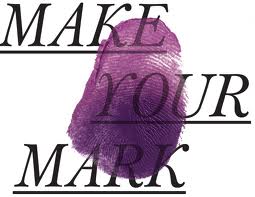 I opened my eyes this morning just like I have done on the previous 41 Christmas Eves, and my mind started to race. My family does all of its getting-together and celebrating on December 24th, which of course means:
I opened my eyes this morning just like I have done on the previous 41 Christmas Eves, and my mind started to race. My family does all of its getting-together and celebrating on December 24th, which of course means:
- last-minute gift shopping
- last-minute gift wrapping
- last-minute cooking
However, in the last 18 months, my family has expanded, and it now include just short of 250 online subscribes to this wonderful blog platform that we call DonorDreams.
While inviting everyone over for dinner tonight is not possible, I thought I’d tell share with you a few things that I’m extremely grateful for this holiday season:
- I am obviously very thankful for your readership.
- I am grateful every time one of you comment on a blog post and engages in a conversation about one of our non-profit, technology, organizational development or fundraising topics.
- I am appreciative of Marissa Garza, whose non-profit technology-inspired blog posts on Monday drive a lot of traffic to the DonorDreams platform. She is an aspiring social media consultant, and I have no doubts that she will get there some day.
- I am appreciative of Dani Robbins, whose once-a-month non-profit blog posts about board development are always pitch perfect. I am proud to say that I have a published author blogging for our readers!
- I am extremely lucky that one of my good friends, John Greco (who just so happens to be one of the best organizational development (OD) professionals in the Chicago area and also just so happens to also blog), allows me to piggyback every Friday on one of his O.D. topics
So, how does all of this well-wishing and seasons greetings work its way into a non-profit blog post? Well, I have three simple messages for you today that deal with the following:
- Your donors, staff, board members and volunteers
- A few housekeeping items
- What gifts I want from YOU this holiday season
 Your donors, staff, board members and volunteers
Your donors, staff, board members and volunteers
It is a busy time of the year, but those people in your extended family (aka your non-profit family) need some love and presents, too. Many fundraising professionals might call it stewardship, but today I call it a holiday gift.
As I have demonstrated above with my good tidings and appreciation of readers and contributors, you need to do the same thing with donors, staff, board members and volunteers.
In my humble opinion, it needs to be more than just a holiday card or year-end staff appreciation party. It needs to be personal and from the heart. Here are a few examples:
- Tell a board member about something specific they helped with that you really appreciated.
- Tell a staff member about something good and mission-focused you spontaneously caught them doing.
- Drop a donor a little handwritten note telling them specifically about one thing that their contribution helped accomplish in 2012, and tell than that it wouldn’t have been possible without them.
Sure, it is time-consuming . . . but this is the season of giving.
 A few housekeeping items
A few housekeeping items
Over the next week, there will be a few days when you will not get something in your inbox from DonorDreams blog. It isn’t because we don’t love you, but the holiday hop is real and it is hard. In year’s past, I was able to blog ahead of time and use the WordPress blog functionality to schedule posts to launch on holidays.
I am thrilled to be able to report to you that my non-profit consulting practice has taken-off in ways I could only dream about at this time last year.
Work plus holiday hop equals a few missed blog posts during the holiday season.
I assume that everyone will be too busy to even notice, but I am one of the more transparent people you know. I just thought you should know.
What gifts I want from YOU this holiday season
Many of us only know each other digitally. We’re cyber-buddies. So, I realized that you don’t know me well enough to know what to get me for the holidays. From this realization, I decided that I would publish my “DonorDreams Holiday Wish List” for all of you to see and consider shopping from. Here it is:
DonorDreams Holiday Wish List
- I am looking for a few more people who are really smart about non-profit related topics (e.g. marketing, volunteer management, fundraising, board development, programming/outcomes/impact, etc) AND good at writing to join the DonorDreams blog team in 2013. There is no pay involved, but it is a lot of fun. If you’re interested, please contact me and let’s talk! If you have always wanted to blog, then this is a great experience and could become a spin-off opportunity for you down the road.
- I am looking for 18 new blog subscribers. I had a personal goal of hitting 250 subscribers by December 31st, and we’re very close. If YOU reached out to just one non-profit professional in your network and said “Hey, I subscribe to this awesome non-profit blog and I think you should subscribe, then we would annihilate this year-end goal. Please help?
- I would love to see more conversation around some of our blog post topics in 2013. If each of you made a year-end resolution to comment once per month, we would have a vibrant non-profit blog community with tons of learning and fun discussion.
I was going to add a few other things to my Wish List (e.g. that iPad or tablet) that I’m hoping for, but I’ll stop here because 1) there is a big man in a red suit that I’m still counting on and 2) I don’t know you well enough to ask for that kind of gift. 😉
From the bottom of my heart at DonorDreams blog, I wish you and yours a very happy holiday season! And as always . . .
Here’s to your health!
Erik Anderson
Founder & President, The Healthy Non-Profit LLC
www.thehealthynonprofit.com
erik@thehealthynonprofit.com
http://twitter.com/#!/eanderson847
http://www.facebook.com/eanderson847
http://www.linkedin.com/in/erikanderson847

 Welcome to O.D. Fridays at DonorDreams blog. Every Friday for the foreseeable future we will be looking more closely at a recent post from John Greco’s blog called “
Welcome to O.D. Fridays at DonorDreams blog. Every Friday for the foreseeable future we will be looking more closely at a recent post from John Greco’s blog called “ In that five-minute period of time as I paced the back of the banquet hall, there was a moment where I stopped listening and worrying about LaShaunda and I focused on what was happening in the room:
In that five-minute period of time as I paced the back of the banquet hall, there was a moment where I stopped listening and worrying about LaShaunda and I focused on what was happening in the room:













